How can we do this? By creating marine protected areas (MPA) across the globe that don’t permit destructive activities like fishing or mining.
We asked ocean researchers from the IOF to envision how this target might be achieved, how the world might look different if it were achieved and how their work might change if 30 per cent of the world’s oceans were protected.
Dr. Vicky Lam
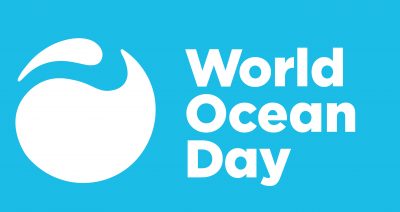 Dr. Vicky Lam, a research associate and fisheries economist in the Changing Ocean Research Unit at UBC's Institute for the Fisheries and Oceans, sees marine protected areas (MPAs) as a necessity for oceans whose biodiversity is rapidly being depleted.
Dr. Vicky Lam, a research associate and fisheries economist in the Changing Ocean Research Unit at UBC's Institute for the Fisheries and Oceans, sees marine protected areas (MPAs) as a necessity for oceans whose biodiversity is rapidly being depleted.
Most of Lam’s work assesses how fisheries around the world will be economically impacted by climate change, but one of her current projects has her partnering with Greenpeace to see how fisheries in the United Kingdom might benefit economically if 30 per cent of U.K. waters become fully protected.
“When we talk about MPAs, people usually think, ‘You’re just thinking about biodiversity and not about people. People depend on the fish for their food,’” Lam said. “But we need to think of the short term and long-term gains and losses. In terms of the short term, there may be some trade-offs, there may be some loss in the fishery revenues because fishers can’t go to their original fishing ground for fishing if that area is assigned as a no-take MPA. But in the longer term, the habitat may be restored, and it will allow the fish population to rebuild.”
Lam believes that MPAs may benefit fisheries by creating a “spillover effect” in which abundant fish stocks inhabiting MPAs swim into neighbouring areas where fishing is allowed.
The placement of these MPAs should be strategic, and planning for them should consider that the world’s oceans, including the distribution of marine species within them, won’t look the same in a future under climate change as they do today.
“It’s important to not just think about the current distribution range of marine species,” Lam said. “We know that under climate change the distribution range of many species will shift. Decision-makers need to work with the scientists to think about the future projected distribution range of species when deciding the locations of the potential MPAs.”
As the ocean warms, fish move poleward to cooler regions and areas within their environmental preference profiles. As such, a current MPA in a tropical area might be of little benefit if the majority of fish leave once things get too hot.
Recent research by Lam and her colleagues has also detailed how protecting 24 per cent of high seas areas, which are distributed among major ocean basins, could maintain 30 per cent of the ocean’s important marine biodiversity.
However, Lam cautioned that protecting only the high seas will not suffice if we want the MPAs to give adequate protection.
“Protecting the high seas is as important as protecting the coastal areas,” Lam said. “But it’s also important to not just focus on highly vulnerable species when we decide where to put the MPAs. Instead, the protection should be comprehensive. We should also consider to protect habitats, bioregions, species assemblages as well as climate refugia etc. ”
“The goal is a bit challenging,” Lam said. “But it’s a wonderful goal for us to move towards. It’s high, but I think it’s still achievable if we all work together.”
By Riley Tjosvold
Dr. Louise Teh
 We can’t close off 30 per cent of the world’s oceans without political will and without serious consideration of the economic toll doing so would take on many coastal communities, according to Dr. Louise Teh, a research associate in the Fisheries Economics Research Unit.
We can’t close off 30 per cent of the world’s oceans without political will and without serious consideration of the economic toll doing so would take on many coastal communities, according to Dr. Louise Teh, a research associate in the Fisheries Economics Research Unit.
Teh researches the socio-economic aspects of fisheries and ocean sustainability. Her current project is examining whether fishing incomes in the world’s 46 least developed and/or highly fish dependent countries meet international standards for poverty, and then seeing whether the harmful fisheries subsidies those countries provide could be used to “fill in the gap” between fishers’ incomes and the poverty line.
“These countries collectively provide about USD 7.1 billion in harmful fisheries subsidies,” Teh said. “We can use that to close almost all or part of the poverty gap, depending on which measure we use.
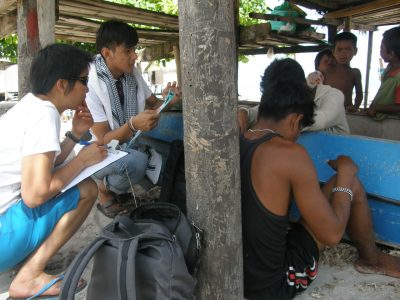
©Lydia Teh
Teh thinks that the 30x30 project is admirable, but its success rests upon how these theoretical MPAs are implemented.
“Whether it will be long lasting and beneficial depends on what they consider during the design phase, whether they account for livelihoods and other social and economic activities, or whether it’s done more strictly on a biodiversity basis, which would look more like closing off all the areas entirely,” she said. “You could do it like an outright reserve, in which case, people’s livelihoods might be affected because they don’t allow fishing anymore.”
A system that balances the needs of people who rely on fish for survival and the requirement that oceans have biodiversity is ideal, according to Teh.
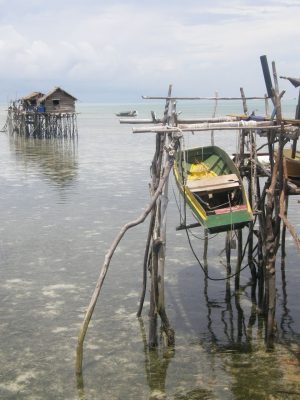
©Lydia Teh
“A lot of times it’s also the policymakers who don’t want to do anything. Either they don’t have the political will, or the economic incentive, or they fear backlash from fishing communities…. We have to overcome these sorts of barriers,” she said.
As for how to solve these problems, Teh has one suggestion:
“I think it comes down to giving people the incentive to do something,” she said. “And that comes down to giving people more information and making people realize how important the ocean is for their daily lives.”
By Riley Tjosvold
Dr. Sarah Foster

Dr. Sarah Foster has spent her career using science to help craft policy that protects marine life.
Currently the program manager for the marine conservation organization Project Seahorse, Foster was instrumental in getting seahorses listed on the Convention on International Trade in Endangered Species (CITES) Appendix II, a list of species threatened by international trade. Seahorses were the first marine fish added to Appendix II.
Foster’s most recent projects have focused on finding ways to ensure countries can meet the standards set by CITES to protect seahorses.
One way to help seahorses thrive is to secure seahorse habitat using MPAs – a suggestion CITES has made to its member countries to keep seahorse trade sustainable. However, MPAs aren’t always as protected as the name implies.
“The problem is that protection means a lot of different things to different people,” Foster said.
Some MPAs limit only tourist activity while others allow bottom trawling, the most destructive fishing practice.
“Until governments can reach a consensus on what a protected area is, then I think we’ll have differing opinions on whether we can reach 30 per cent by 2030,” Foster said. “The end goal must be at least 30 per cent of the oceans protected from all extractive and habitat damaging activities, but it might be necessary to agree some benchmarks to start and then evolve from there to full protection. That benchmark must include getting rid of the most egregious human pressures – those that alter habitats and ecosystems. Bottom trawling and mining are two such activities – they cannot be allowed.”
If MPAs initially forbid destructive fishing practices like bottom trawling but allow more sustainable fishing practices, such as hook and line fishing, Foster thinks that these areas can help fish stocks and continue to support communities that depend on fish for food or livelihoods.
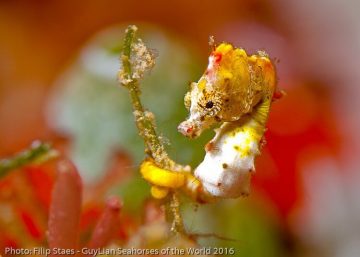
© Filip Staes, Guylian Seahorses of the World Photography Competition 2016
“Eliminating nonselective fishing practices from large swaths of the ocean would have a huge benefit for seahorses,” she said. “And if we did manage to set aside 30 per cent of seahorse-relevant habitat, that would obviously go a long way to reducing pressure on them and the many other species that live alongside them. It would only mean good things.”
By Riley Tjosvold
Dr. Jacqueline Maud
 Jacqueline Maud is a plankton ecologist and post-doctoral researcher in the Marine Food Webs Working Group of the IOF’s Hakai Coastal Initiative. She’s currently investigating the still-mysterious diets of zooplankton using several key zooplankton species in the Strait of Georgia as a case study.
Jacqueline Maud is a plankton ecologist and post-doctoral researcher in the Marine Food Webs Working Group of the IOF’s Hakai Coastal Initiative. She’s currently investigating the still-mysterious diets of zooplankton using several key zooplankton species in the Strait of Georgia as a case study.
While previous studies have zoomed in on zooplankton diets by slicing the ocean critters open and peering at them through a microscope, Maud is using a process called molecular gut content analysis and another process called DNA metabarcoding to get a high-resolution picture of what they eat. DNA from inside the zooplankton gets extracted, amplified, and then sequenced so that Maud can identify the DNA of all the organisms that the zooplankton has consumed.
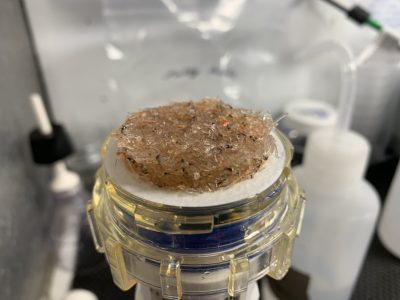
Zooplankton from the Strait of Georgia. ©Brian Hunt
“Up to now, we’ve known only half of the story,” Maud said. “A lot of copepods, for example, were historically thought of as strictly herbivorous, but we now know that this is not the case. It is molecular gut content analyses that are revealing the full range of taxa that they can feed on and we know they feed on other marine microzooplankton, including jellyfish as well.”
Knowing the diets of zooplankton may help us predict how climate change will alter food webs, according to Maud.
Maud thinks that if the 30x30 project is successful, her work might take on a slightly different perspective.
“MPAs aim to conserve and enhance biodiversity and preserve ecosystem health, and policies tend to look at the oceans from the top down, for example, by preventing commercial fishing at the top of the food web,” she said. “My research looks at the ecosystem more from the bottom-up, so how phytoplankton and zooplankton and the balance of these smaller species at the bottom of the food web can affect the larger animals higher up, like salmon. We need to understand the baseline feeding behaviour if we are to fully understand the benefits of policies such as MPAs. I can imagine a scenario where the dominant zooplankton species may shift in response to, say, increasing top predator numbers, through cascading effects down the food web."
As for whether the 30x 30 goal is achievable, Maud thinks several challenges will arise during the implementation of such an ambitious ocean protection strategy, the primary one being logistics.
“It’s a huge task because you’ve got to include all of the stakeholders,” she said. “You need to include fishers, mining, tourism, environmental economics; you have to consider the different species in the proposed MPA, which species were there previously, and whether some species will leave the MPA because of climate change.”
“I don’t think it’s feasible in 10 years,” she said. “It’s an awesome goal to aim for and we need to protect as much of our oceans as we can, but I think it will be tricky.”
Dr. Gabriel Reygondeau
 Dr. Gabriel Reygondeau, a research associate in the Changing Oceans Research Unit in the IOF, has been pondering where to put MPAs for a long time.
Dr. Gabriel Reygondeau, a research associate in the Changing Oceans Research Unit in the IOF, has been pondering where to put MPAs for a long time.
Much MPA planning has focused on getting a percentage of every country’s exclusive economic zone (EEZ) covered by MPAs – including the 30x30 plan-- but there may be a more efficient way to support biodiversity, one that also takes less from the global economy.
Asking countries to carry an equal share of the load may be tidy from a legislative perspective, but it doesn’t do much for biodiversity. The 30 per cent should target the places that give us the most bang for our biodiversity buck.
“Protecting 10 per cent of the ocean in each country doesn’t make any sense,” he said. “There are countries in the tropics that need more than 10 per cent, and there are countries where you only need 0.1 per cent of your EEZ.”
Asking countries to carry an equal share of the load may be tidy from a legislative perspective, but it doesn’t do much for biodiversity, according to Reygondeau. The 30 per cent should target the places that give us the most bang for our biodiversity buck.
One political hurdle we must overcome, according to Reygondeau, is allowing MPAs in the high seas.
“The first barrier is that the high seas are not owned by anyone; therefore, they are owned by everyone. The second barrier is that implementing an international convention of the high seas could jeopardize commercial interests,” he said.
“Fishing is one of the small benefits of the high seas, but there is a myriad of other benefits such as minerals and DNA sequences.”
A second issue is getting MPAs in the places that they’re most needed.
“If you want to protect biodiversity then you need to prioritize the coasts of countries in the tropics. But most of these countries cannot afford the implementation of an MPA or the cost of losing their fisheries activity benefit,” he said. “It is easier for northern, developed countries to implement conservation strategies, but the largest number of vulnerable species are localized in areas where funding for protection isn’t sufficient.”
Reygondeau detailed one possible solution to this problem: creating more international funds, based on international treaties, that could help cover the implementation of the MPAs and make up for the associated economic loss. However, the solution comes with the caveats that wealthier countries must provide a share of the funds that is proportional to their wealth, and there must be a strong political will to create MPAs in developing countries.
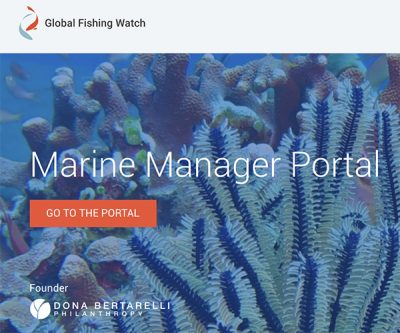 He also pointed to the benefits of new tools such as the Global Fishing Watch Marine Manager, which collects human-use, biological, oceanographic, and maritime zoning data to help guide the design and management of MPAS.
He also pointed to the benefits of new tools such as the Global Fishing Watch Marine Manager, which collects human-use, biological, oceanographic, and maritime zoning data to help guide the design and management of MPAS.
Regardless, for Reygondeau, the first steps we can take towards getting more of Earth’s oceans protected are clear:
“The first thing we need to resolve is how to make it easier for countries to implement MPAs,” he said. “Second is having an international fund to help countries that don’t have the resources to create MPAs to do it, and third is creating an international agreement for the high seas.”
By Riley Tjosvold
Tags: Blue economy, bottom trawling, conservation, CORU, FERU, fisheries economics, food webs, Gabriel Reygondeau, Hakai Coastal Initiative, human dimensions, international trade, IOF postdoctoral fellows, IOF Research Associates, Jacqueline Maud, Louise Teh, Marine protected areas, overfishing, Pelagic Ecosystems Lab, plankton, Project Seahorse, Research, Sarah Foster, sustainability, Vicky Lam, Women in Science, World Ocean Day, zooplankton